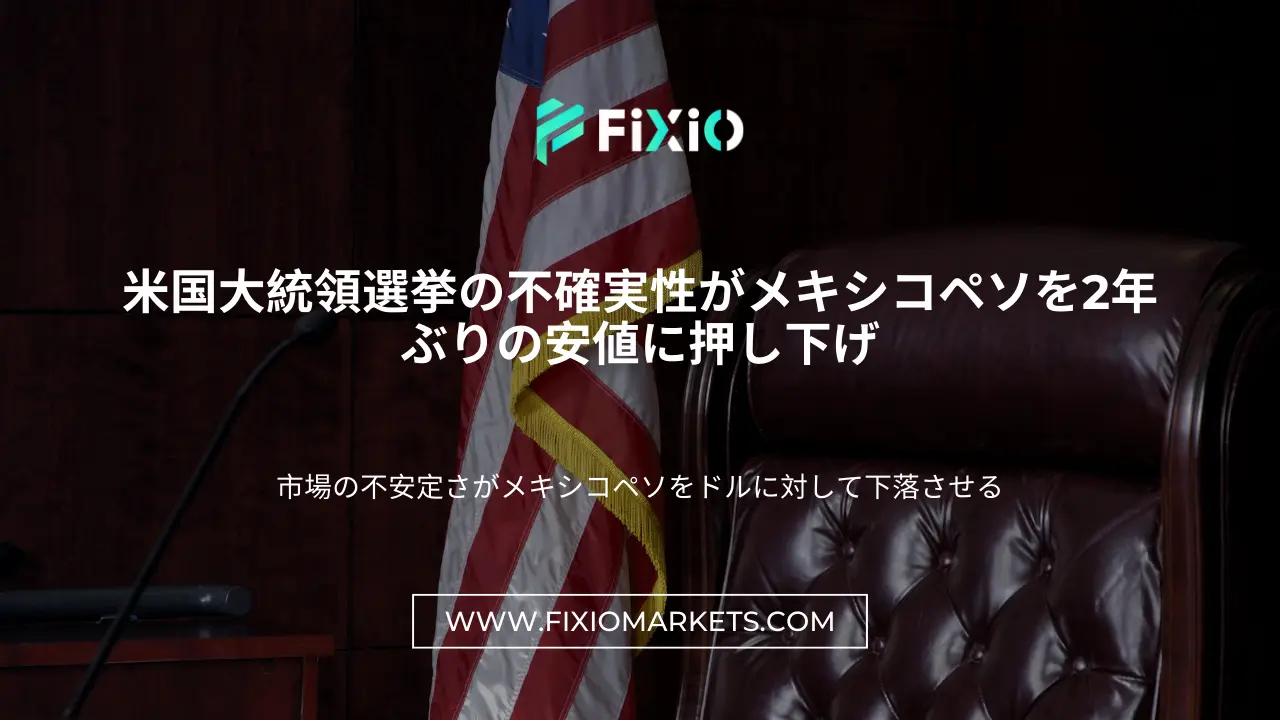
The Mexican peso has faced significant pressure as U.S. election results come in. The currency dropped to 20.7080 per dollar, marking its lowest point in two years. Traders are bracing for more volatility, with predictions that the peso may continue to fluctuate as the election results unfold. This uncertainty stems from both domestic and international factors, including the possibility of new tariffs on Mexican exports.
Several factors are contributing to the sharp decline of the Mexican peso. First and foremost is the market’s reaction to the tight race in the U.S. presidential election. Traders are concerned that if Donald Trump wins, he will impose additional tariffs on Mexican goods, further weakening the peso. This has led many investors to sell the peso, expecting even more volatility in the coming days.
On the other hand, if Kamala Harris wins, it could provide relief for the peso, potentially strengthening it to about 19 pesos per dollar. However, market uncertainty will likely persist no matter who wins the election.
The Mexican peso has been particularly sensitive to Donald Trump’s potential victory. A Trump win could result in a significant devaluation of the peso, just as it did in 2016 when the currency fell by over 8.5%. This time, with Trump’s promise to reinstate tariffs on Mexican exports, the peso could face even more pressure, possibly reaching levels as low as 20.50 per dollar.
Traders are watching the election results closely, knowing that Trump's policies have the potential to cause more turmoil for the Mexican peso. Market volatility is expected to continue, especially with the uncertainty surrounding the election outcome.
In addition to U.S. election results, Mexico's domestic politics are also affecting the value of the Mexican peso. The ruling Morena party, led by President Claudia Sheinbaum, has enacted controversial reforms that have raised concerns among foreign investors. One such reform is the judicial overhaul, which critics say politicizes the judiciary, reducing investor confidence in Mexico's economic stability. This has contributed to a decline in the peso's value over the past year.
While the U.S. government has criticized the judicial changes, it’s also important to consider how these shifts could impact Mexico’s ability to attract foreign investment. The combination of domestic unrest and external factors, such as the U.S. election, has resulted in a weakened peso.
As U.S. election results continue to emerge, the Mexican peso will likely experience more volatility. Analysts are predicting that the currency will remain sensitive to both political events in Mexico and developments in the U.S. election. A Trump win could push the peso lower, while a victory for Kamala Harris might stabilize the currency. Regardless of the outcome, the uncertainty surrounding the election will keep the peso in a volatile position for the foreseeable future.
In conclusion, the Mexican peso has hit a two-year low, with U.S. election volatility playing a key role. As Donald Trump and Kamala Harris fight for the presidency, the peso remains highly sensitive to political developments. If Trump wins, expect more challenges for the peso, while a Harris victory could provide some stability. Either way, market volatility is expected to continue, and the Mexican peso will be at the mercy of political outcomes in both Mexico and the U.S.
For further insights on related topics, visit our Prex Blogs

The Mexican peso has hit a two-year low against the U.S. dollar amid growing U.S. election volatility. Discover how the outcome
Superior trade execution & trading conditions with the NDD method.

The online FX industry provides a platform for investors worldwide to engage in the buying and selling.

Subscribe to our daily newsletter and get the best forex trading information and markets status updates
Trade within minutes!
Comment (0)